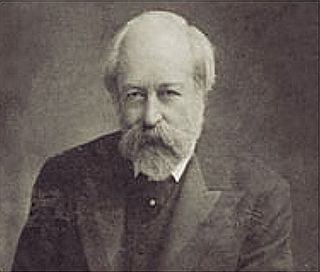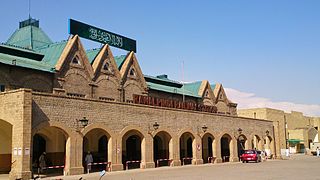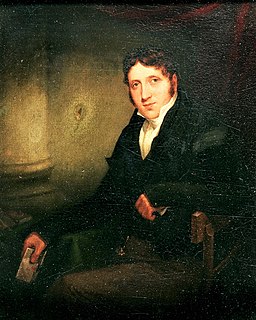
John Sell Cotman was an English marine and landscape painter, etcher, illustrator, author and a leading member of the Norwich School of painters.

Thomas Chippendale was born in Otley in the West Riding of Yorkshire, England in June 1718. He became a cabinet-maker in London, designing furniture in the mid-Georgian, English Rococo, and Neoclassical styles. In 1754 he published a book of his designs, titled The Gentleman and Cabinet Maker's Director, upon which success he became renowned. The designs are regarded as reflecting the current British fashion for furniture of that period and are today reproduced globally. He was buried 16 November 1779, according to the records of St Martin-in-the-Fields, in the cemetery since built upon by the National Gallery. Chippendale furniture is highly valued; a padouk cabinet that came up for auction in 2008 sold for £2,729,250.

Mary, Princess Royal and Countess of Harewood was a member of the British royal family. She was the third child and only daughter of King George V and Queen Mary and was born during the reign of Queen Victoria, her great-grandmother. Mary was the paternal aunt of the current British monarch, Queen Elizabeth II. Her education started at home. World War I brought Mary out of seclusion as she launched a charity campaign to support British troops and sailors. She eventually became a nurse. Mary married Viscount Lascelles in 1922. She was an avid collector of jewellery.
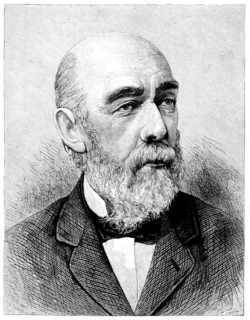
James Fergusson FRS was a Scottish architectural historian, mainly remembered for his interest in Indian historical architecture and antiquities. He was an important figure in the 19th century rediscovery of ancient India. He was originally a businessman, and though not formally trained as an architect, designed some buildings and decorative schemes.

The Rockefeller Museum, formerly the Palestine Archaeological Museum (PAM), is an archaeology museum located in East Jerusalem that houses a large collection of artifacts unearthed in the excavations conducted in Mandatory Palestine, in the 1920s and 1930s.
Sir John James Burnet, was a Scottish Edwardian architect who was noted for a number of prominent buildings in Glasgow, Scotland and London, England. He was the son of the architect John Burnet, and later went into partnership with his father, joining an architectural firm which would become an influential force in British Modern architecture in the 20th century.
Richard Vickerman Taylor was born in Leeds, Yorkshire, on 10 October 1830, the son of John Taylor and his wife Ann Vickerman. He was married twice, first to Caroline Franks and then to Elizabeth Ann Knowles.
Derek John Walker was a British architect primarily associated with urban planning and leisure facilities architecture, through his firm Derek Walker Associates.

Sir Ernest George RA was an English architect, landscape and architectural watercolour painter, and etcher.
Piet Christiaan Leonardus de Jong was an artist who worked on the illustration and reconstruction of archaeological sites in the Mediterranean, including Mycenae, Knossos, Eutresis, Gordion, and the Athenian Agora.
Giles Arthington Worsley was an English architectural historian, author, editor, journalist and critic, specialising in British country houses. He was the second son of Sir Marcus Worsley of Hovingham Hall, a nephew of Katharine, Duchess of Kent, and died of cancer aged 44.
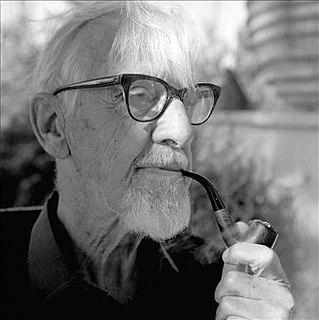
Austen St. Barbe Harrison (1891–1976) was a British-born architect. While British, Harrison spent most of his career overseas, and mainly in the Middle East. His works include the British Representative's Residence, Amman, the High Commissioner's Residence, Jerusalem, the Rockefeller Museum, Jerusalem, 1935, and Nuffield College, Oxford.
Agnes Ethel Conway (1885–1950) was a British historian and archaeologist who worked in the Middle East from 1929-1936. She was noted for her work with her husband George Horsfield at Petra and Kilwa, and produced detailed studies of the history of her father's castle, Allington, in Kent which had been owned by the Wyatt family in the 16th century.
The Kenyon Institute, previously known as the British School of Archaeology in Jerusalem (BSAJ), is a British research institute in Jerusalem. No longer solely focused on archaeology, the Institute instead serves as "the home of British research and intellectual life in Israel/Palestine" in the fields of humanities, social sciences and "all the academic disciplines supported by the British Academy." It is part of the Council for British Research in the Levant.
Elizabeth Denby, was an English social housing expert and consultant.
Frederick Mackenzie (1788?–1854) was a British watercolour painter and architectural draughtsman.
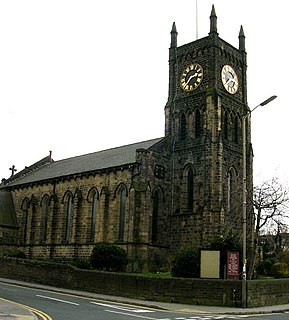
William Wallen FSA (1807–1888) was an architect who practiced in London and Huddersfield, Yorkshire. He was also a campaigner for better architectural education and professional status.

William Gilbert Foster was a British painter..

Dimitri Constantine Baramki, often styled D. C. Baramki, was a Palestinian archaeologist who served as chief archaeologist at the Department of Antiquities of the British Mandate government from 1938 to 1948. From 1952 until his retirement, he was the curator of the Archaeological Museum at the American University of Beirut, Lebanon, where he served as a professor of archeology.





